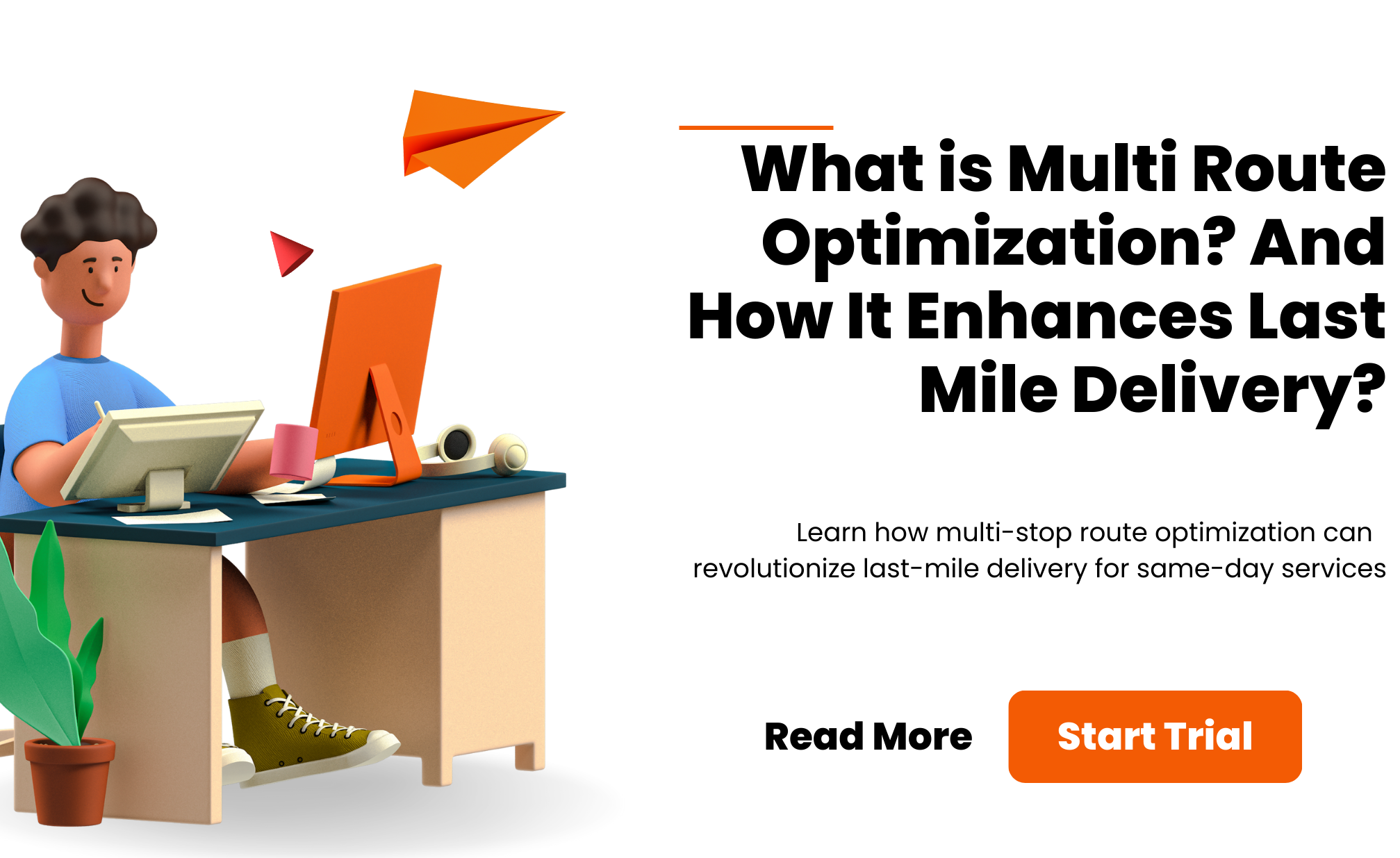In the fast-paced world of logistics, meeting customer expectations for speedy and reliable deliveries has become paramount. One of the key challenges faced by logistics companies is optimizing the last-mile delivery process, particularly for same-day delivery services. Multi-route optimization has emerged as a powerful solution to streamline last-mile logistics, enhance efficiency, and ensure timely deliveries.
In this article, we will delve into the concept of multi-route optimization, its significance in the logistics industry, and how it revolutionizes last-mile delivery for same-day services.
What is Multi-Route Optimization?
Multi-stop route planner is a sophisticated logistics strategy that involves finding the most efficient routes for delivery vehicles to fulfill multiple orders or shipments. This optimization process considers various factors such as delivery time windows, vehicle capacity, traffic conditions, and delivery priorities. By utilizing advanced algorithms and cutting-edge technology, logistics companies can efficiently allocate resources and minimize the total distance traveled, resulting in cost savings and reduced environmental impact.
The Significance of Same-Day Delivery Services
-
Meeting Customer Expectations: In today's consumer-driven market, customers expect fast and convenient deliveries. Same-day delivery services have emerged as a differentiating factor for businesses, providing a competitive advantage and fostering customer loyalty.
-
Rising Demand for E-Commerce: The growth of e-commerce platforms has significantly increased the demand for same-day delivery services. Retailers and online marketplaces must adapt to this trend to stay ahead in the market.
-
Urbanization and Time Sensitivity: With increasing urbanization, customers often lead busy lives and require time-sensitive deliveries. On demand delivery services cater to these time-sensitive demands, satisfying customers and boosting brand reputation.
The Challenges of Last-Mile Delivery
-
Traffic Congestion: Urban areas face heavy traffic, leading to delayed deliveries and increased fuel consumption. Last-mile optimization is crucial to navigate through congested routes efficiently.
-
Delivery Time Windows: Some customers have specific delivery time preferences, especially for perishable or time-sensitive goods. Coordinating multiple deliveries within specific time windows can be a logistical puzzle.
-
Variable Order Volumes: The volume of orders fluctuates throughout the day, making it challenging to balance delivery routes and maintain optimal vehicle utilization.
You might like: How Multi-Route Optimization Drives Business Success?
How Multi-Route Optimization Enhances Last-Mile Delivery?
-
Reduced Delivery Time: Multi-route optimization optimizes delivery routes, minimizing travel time and ensuring packages reach their destinations faster.
-
Improved Efficiency: By organizing deliveries more effectively, logistics companies can reduce operational costs and allocate resources efficiently.
-
Real-Time Adjustments: Advanced multi-route optimization systems can adapt to real-time changes, such as traffic conditions or new orders, ensuring seamless delivery operations.
Benefits of Multi-Route Optimization for Last-Mile Delivery
-
Cost Savings: Shorter and optimized routes lead to reduced fuel consumption and lower operational costs, positively impacting a company's bottom line.
-
Enhanced Customer Experience: Timely deliveries and accurate order tracking lead to improved customer satisfaction and increased brand loyalty.
-
Sustainability and Environmental Impact: By minimizing travel distances and reducing carbon emissions, multi-route optimization contributes to a greener and more sustainable supply chain.
Real-World Examples
- Amazon Prime: The retail giant, Amazon, has leveraged multi-route optimization to provide same-day delivery services for its Prime members, offering a convenient shopping experience.
- Food Delivery Services: Companies like UberEats and DoorDash use multi-route optimization to optimize food deliveries, ensuring hot meals reach customers quickly.
- Parcel Delivery Companies: Traditional parcel delivery companies have integrated multi-route optimization into their systems to enhance last-mile efficiency and meet same-day delivery demands.
Implementation Challenges and Solutions
Implementing multi-route optimization comes with its fair share of challenges. One of the primary hurdles is ensuring the accuracy and quality of the data used for optimization. Logistics companies must establish data validation measures and conduct regular audits to maintain reliable data.
Another challenge is integrating the multi-route optimization software with existing logistics systems. Seamless integration is crucial to avoid disruptions and ensure a smooth transition. Additionally, as businesses grow and order volumes increase, the scalability of the multi-route optimization system becomes essential.
Companies need to invest in robust systems that can handle higher workloads without compromising efficiency. Addressing these challenges with careful planning and execution will maximize the benefits.
The Future of Multi-Route Optimization
The future of multi-route optimization is brimming with possibilities. As drone and autonomous vehicle technology continues to advance, multi-route optimization will play a crucial role in orchestrating their integration into ‘last-mile delivery operations. Drones and autonomous vehicles can revolutionize the logistics landscape by offering quicker and more flexible delivery options.
Moreover, predictive analytics will become increasingly important in multi-route optimization. By analyzing historical data and customer behavior, logistics companies can anticipate demand and optimize delivery routes proactively, further improving efficiency.
Additionally, integrating blockchain technology into the optimization process can enhance the security and transparency of data, creating a more trustworthy supply chain ecosystem. Embracing these innovations will empower logistics companies to stay at the forefront of the industry and continually enhance their last-mile delivery services.
Multi-route optimization is a game-changer for delivery companies seeking to enhance their last-mile delivery operations, especially for same-day services. By leveraging advanced technology and data-driven decision-making, businesses can optimize their delivery routes, reduce costs, and improve customer satisfaction. As the demand for faster and more efficient deliveries continues to grow, multi-route optimization will play an increasingly critical role in shaping the future of logistics and supply chain management.

 United States
United States Canada
Canada
